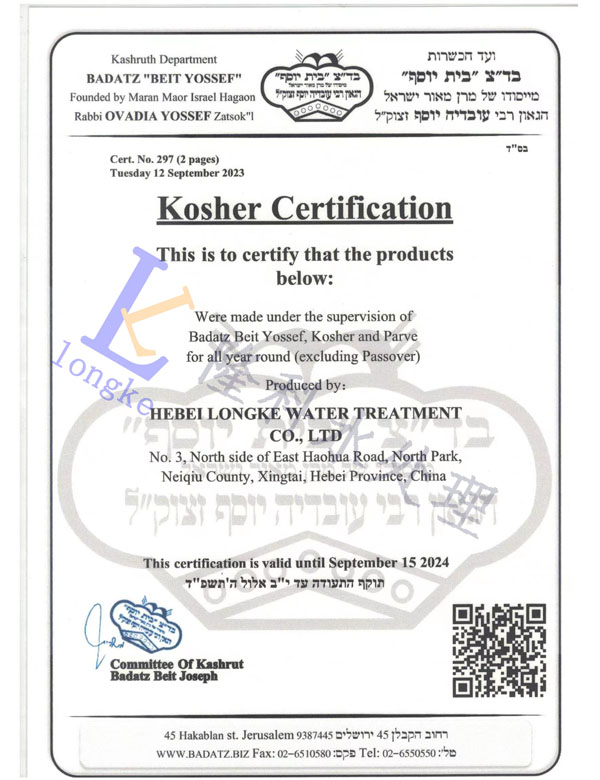Polyacrylamide Applications in Water Treatment Processes and Techniques
The Role of Polyacrylamide in Water Treatment
Water treatment is a crucial process that ensures the availability of clean and safe water for various applications, such as drinking, agricultural irrigation, and industrial use. Among the myriad chemicals used in water treatment, polyacrylamide (PAM) has gained significant attention due to its unique properties and effectiveness in enhancing water quality. This article explores the importance of polyacrylamide in water treatment, its types, mechanisms of action, and applications.
What is Polyacrylamide?
Polyacrylamide is a synthetic polymer created from the polymerization of acrylamide monomers. It is often found in a granular or powder form and can be categorized into two main types nonionic and ionic. Ionic PAMs can further be divided into anionic and cationic variants, depending on their charge. The selection of PAM type greatly depends on the specific water treatment application and the characteristics of the water being treated.
Mechanism of Action
Polyacrylamide serves multiple functions in water treatment processes. One of the most notable properties of PAM is its ability to act as a flocculant. Flocculation is the process where small particles clump together to form larger aggregates (flocs) that can be easily removed from water. This process is critical in treating wastewater, as it enhances the removal of suspended solids, colloids, and some dissolved contaminants.
The flocculation mechanism occurs through charge neutralization and bridging. In the case of anionic PAM, the negatively charged polymer interacts with positively charged particles in the water, leading to charge neutralization. Cationic PAM works oppositely by bonding with negatively charged particles. Furthermore, due to its long-chain molecular structure, PAM can form a three-dimensional network that bridges multiple particles, facilitating their agglomeration into larger flocs.
Applications in Water Treatment
Polyacrylamide is widely used in various water treatment applications, including municipal wastewater treatment, industrial effluent treatment, and sludge dewatering. Here, we will delve into some of these applications
polyacrylamide water treatment

1. Municipal Wastewater Treatment PAM plays a vital role in municipal wastewater treatment plants, where it aids in the primary and secondary treatment stages. Its flocculating properties help in removing suspended solids and particulate matter, significantly enhancing the effluent quality before it is released into the environment or reused.
2. Industrial Effluent Treatment Many industries, such as mining, textiles, and food processing, generate effluents containing high levels of pollutants and particulates. By utilizing PAM, industries can effectively reduce these contaminants, ensuring compliance with environmental regulations. The polymer’s capacity to improve sedimentation rates also helps in the efficient recovery of valuable resources, such as water and metals.
3. Sludge Dewatering Sludge management is a significant challenge in wastewater treatment. PAM is often employed in dewatering applications to reduce the volume of sludge, making disposal more economical and environmentally friendly. By promoting floc formation, PAM helps stabilize the sludge structure, thus allowing for more efficient dewatering processes.
4. Agricultural Applications Beyond conventional water treatment, polyacrylamide is also used in agriculture, particularly in soil erosion control and irrigation management. When applied to soil, PAM can enhance water retention, reduce surface runoff, and improve soil structure, thus promoting sustainable agricultural practices.
Environmental Considerations
While polyacrylamide is effective for various water treatment applications, it is essential to consider its environmental impact. Acrylamide, a constituent of PAM, is known to be toxic, and improper handling can pose risks. Therefore, appropriate measures should be taken to ensure the safe use of PAM, such as using low-toxicity formulations or ensuring proper polymer chain lengths to mitigate risks.
Conclusion
Polyacrylamide has emerged as a powerful agent in the realm of water treatment, demonstrating versatility in applications ranging from municipal wastewater treatment to agricultural practices. Its flocculating properties facilitate the removal of pollutants and enhance water quality, making it an indispensable tool for achieving cleaner water. Nevertheless, as with any chemical, it is crucial to use PAM responsibly, taking into account safety and environmental considerations to maximize its benefits while minimizing potential risks.
-
Water Treatment with Flocculant Water TreatmentNewsJun.12,2025
-
Polymaleic AnhydrideNewsJun.12,2025
-
Polyaspartic AcidNewsJun.12,2025
-
Enhance Industrial Processes with IsothiazolinonesNewsJun.12,2025
-
Enhance Industrial Processes with PBTCA SolutionsNewsJun.12,2025
-
Dodecyldimethylbenzylammonium Chloride SolutionsNewsJun.12,2025





